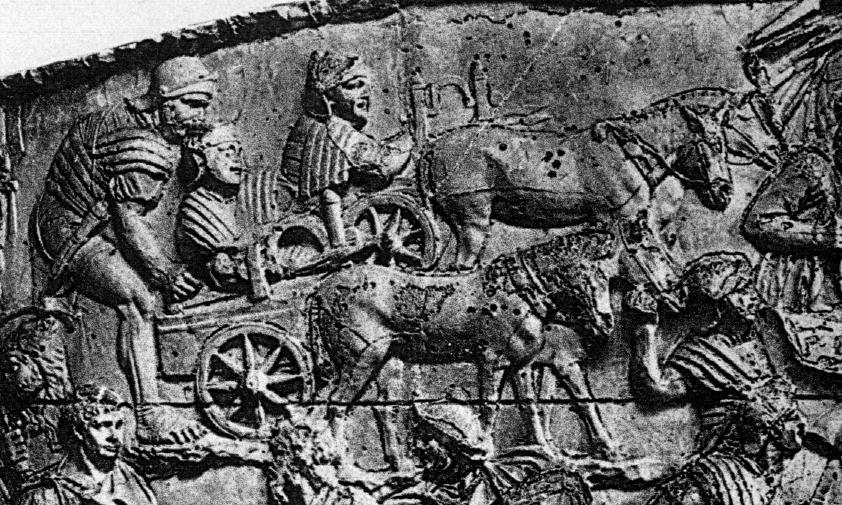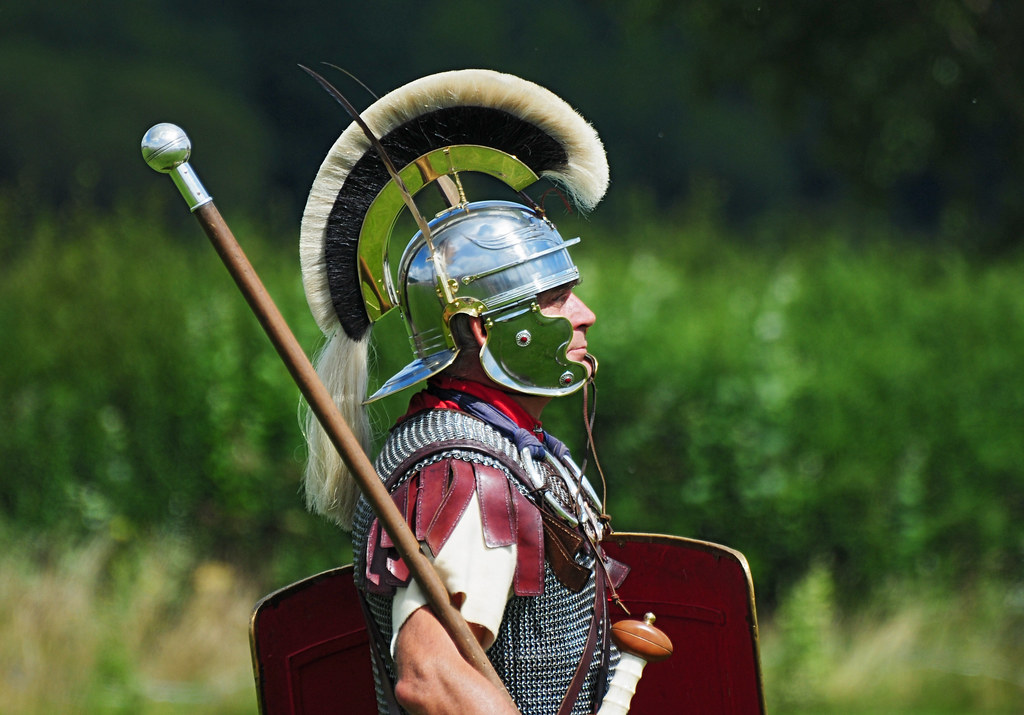Having delineated the devastation the
locusts (demons) will cause, John gives a more detailed description of their appearance in the vision. They are described as locusts because they bring massive, devastating, rapid judgment from God (cf.
Ex. 10:4-5,
12-15;
Deut. 28:38;
1 Kings 8:37;
2 Chron. 7:13;
Pss. 78:46;
105:34;
Joel 2:1ff.;
Amos 7:1), but their exaggerated, terrifying features reveal them to be unlike any locust, scorpion, or any other creature ever before seen on earth. John can only give an approximation of what this formidable spiritual army looked like, as the repeated use of the terms
like (used ten times in this passage) and
appeared to be indicates. To describe the supernatural and unfamiliar demon horde, John chooses natural and familiar analogies.
The general
appearance of the locusts was like horses prepared for battle. They were warlike, powerful, and defiant, like horses straining at the bit and pawing the ground in their eagerness to charge forward on their mission of death.
Joel 2:4-5 describes a locust plague in similar terms.
On their heads John saw what
appeared to be crowns like gold. The crowns they wore are called [FONT="]
stephanoi[/FONT], the victors' crowns, indicating that the demon host will be invincible, unstoppable, and all-conquering. Men will have no weapon that can harm them and no cure for the terrible torment they inflict. That
their faces were like the faces of men indicates they are intelligent, rational beings, not actual insects. While
Jeremiah 51:27 describes locusts as having bristles like hair, the description of their
hair as being
like the hair of women more likely emphasizes their seductiveness. The glory or beauty of a woman is her hair, which she may decorate to become more alluring. Like the Sirens of Greek mythology,
these locustlike demons will lure people to their doom. Having
teeth like the teeth of lions (cf.
Joel 1:6), they will be far more fierce, powerful, and deadly than lions, ripping and tearing apart their victims.
Breastplates of iron, designed to protect the vital organs and preserve the life of the soldier, here symbolize the demon horde's invulnerability; they will be impossible to resist or destroy. In a further metaphor drawn from the battlefield, John, like the prophet Joel (
Joel 2:4-5), compares
the sound of their wings to a moving army, noting that it
was like the sound of chariots, of many horses rushing to battle. There will be no escaping their massive, worldwide onslaught; nowhere to run or hide. The threefold comparison of the demons to
scorpions (cf.
vv. 3,
5) stresses that their sole mission is
to hurt men. The nature of this full-scale demonic torment that drives people to seek death and not find it, to pursue death and not catch it, is not described. However, a look at some biblical illustrations of demonic torment offers some good insights. The maniacs of Gadara were so tormented by demons that they were insane, living in tombs (
Matt. 8:28). All about Galilee Jesus encountered tormented demoniacs (
Matt. 4:23-24). A centurion's servant was tormented with paralysis (
Matt. 8:6). A demon-possessed boy kept throwing himself into fires and water in acts of self-destruction (
Mark 9:20-22). Such are the spiritual and physical torments demons can inflict. For
five months they will do such to a whole world of ungodly sinners. The reiteration that the demons will be permitted to torment people for a limited time stresses God's sovereign power over the duration of their assault. Eventually, He will return them to the abyss with their evil master (
20:1-3) and then send them to the lake of fire (
20:10).
MacArthur New Testament Commentary, The - MacArthur New Testament Commentary – Revelation 1-11.
 ... and comparing it to the preterist view.
... and comparing it to the preterist view.




